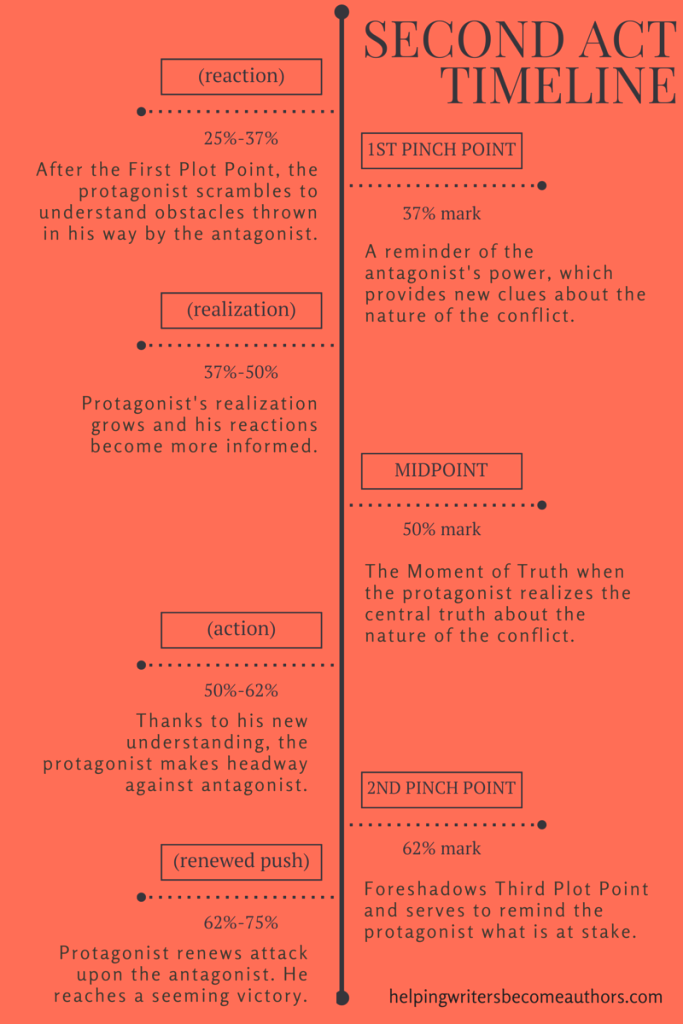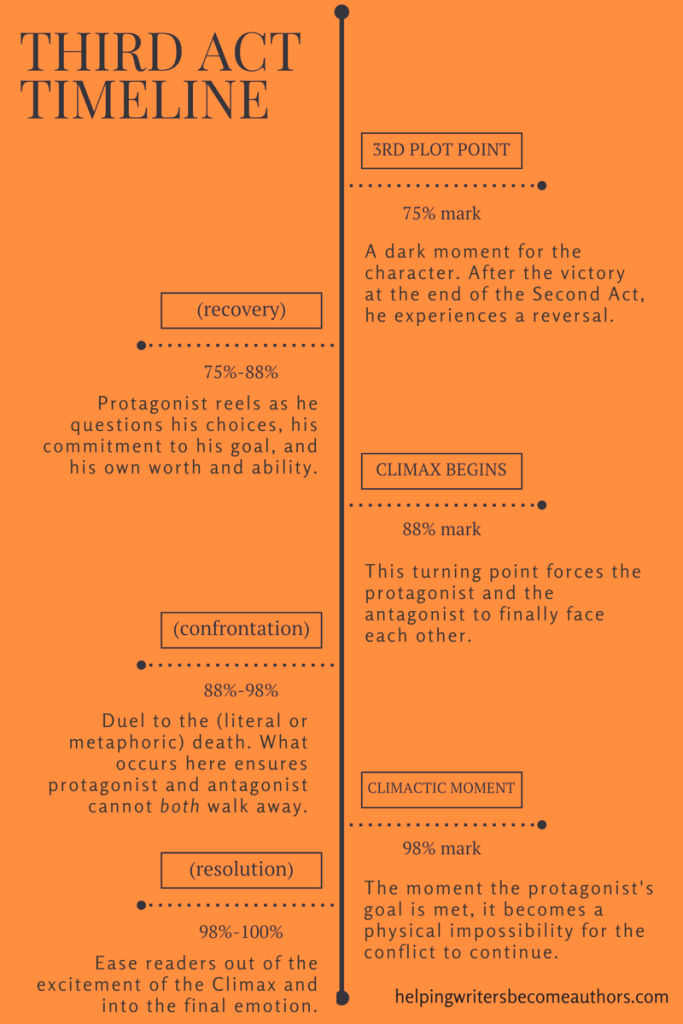How to Properly Structure Your Story’s Outline
Episode #7 of the course How to outline your novel by K.M. Weiland
Welcome to the seventh lesson in our course on outlining your novel! To force structure on a story too early is inevitably to force the story itself. You don’t want to impose structure; rather, you want the story to find its own structure so you can strengthen it.
This is why you shouldn’t write out your story’s structure until halfway through the outline. At that point, you will know enough about the story to identify at least half its structural beats. From there, you can fill in the blanks and search for missing beats.
The Basics of Story Structure
The foundational structural elements are as follows:
The First Act, which spans from the 1% mark to the 25% mark and presents the foundational period of setup for the story to follow.
The Hook, the opening moment that grabs reader curiosity.
The Inciting Event, which officially kicks off the plot and usually begins halfway through the First Act at the 12% mark.
The Key Event, which officially engages the protagonist in the events of the plot and which usually occurs at the First Plot Point.
The First Plot Point, which marks the end of the First Act and the end of the story’s setup in the character’s “Normal World.” It occurs around the 25% mark.
The First Half of the Second Act, which spans from the 25% mark to the 50% mark. This notes a period of reaction for the protagonist, in which he tries to cope with the events of the First Plot Point.
The First Pinch Point, which occurs at the 37% mark and is a reminder of the antagonistic force’s power and a setup for the Midpoint.
The Midpoint/Second Plot Point, which occurs at the 50% mark and is a moment of revelation for the protagonist as he comes into a clearer understanding of the true nature of the conflict.
The Second Half of the Second Act, which spans from the 50% to the 75% marks. This is a period of action for the protagonist. Armed with his new understanding, found at the Midpoint, he can now take the action right to the antagonistic force.
The Second Pinch Point, which occurs at the 62% mark, halfway through the Second Half of the Second Act. Like the First Pinch Point, it is an emphasis or reminder of the antagonistic force and a set up for the Third Plot Point.
The Third Plot Point, which is a moment of seeming defeat for the protagonist and takes place around the 75% mark.
The Third Act, which is the final quarter of the book, spanning from the 75% mark to the end, and in which the conflict is finally resolved, one way or another.
The Climax, which starts halfway through the Third Act, around the 88% mark and is heralded by a final turning point that pits the protagonist against the antagonistic force in the final battle.
The Climactic Moment, which occurs at the end of the Climax and is the true ending of the story, the moment when the conflict is finally resolved.
The Resolution, which ends the story with a final scene or two to tie up the loose ends.
(For examples of how all these elements play out in popular books and movies, check out the Story Structure Database.)
How to Find Your Story’s Structure
1. Examine the Existing Story for Obvious Beats
Start by identifying “big” scenes. Which scenes are the moments readers will remember most vividly? Which scenes turn the plot in dramatic ways?
2. Write a List and Make Note of the Missing Pieces
List all the major structural beats you already know about on the left side of a piece of paper, then fill out the right side with the scenes you feel meet the respective requirements. The blanks will pop out.
3. Brainstorm Answers to Fill the Gaps
Ask lots of questions. What needs to happen to fill the blanks between plot points? Keep asking and answering until you complete your structural checklist.
Stay tuned! Tomorrow, we’re going to talk about the last step before your scene outline: character sketches.
Recommended book
5 Secrets of Story Structure by K.M. Weiland
Share with friends




